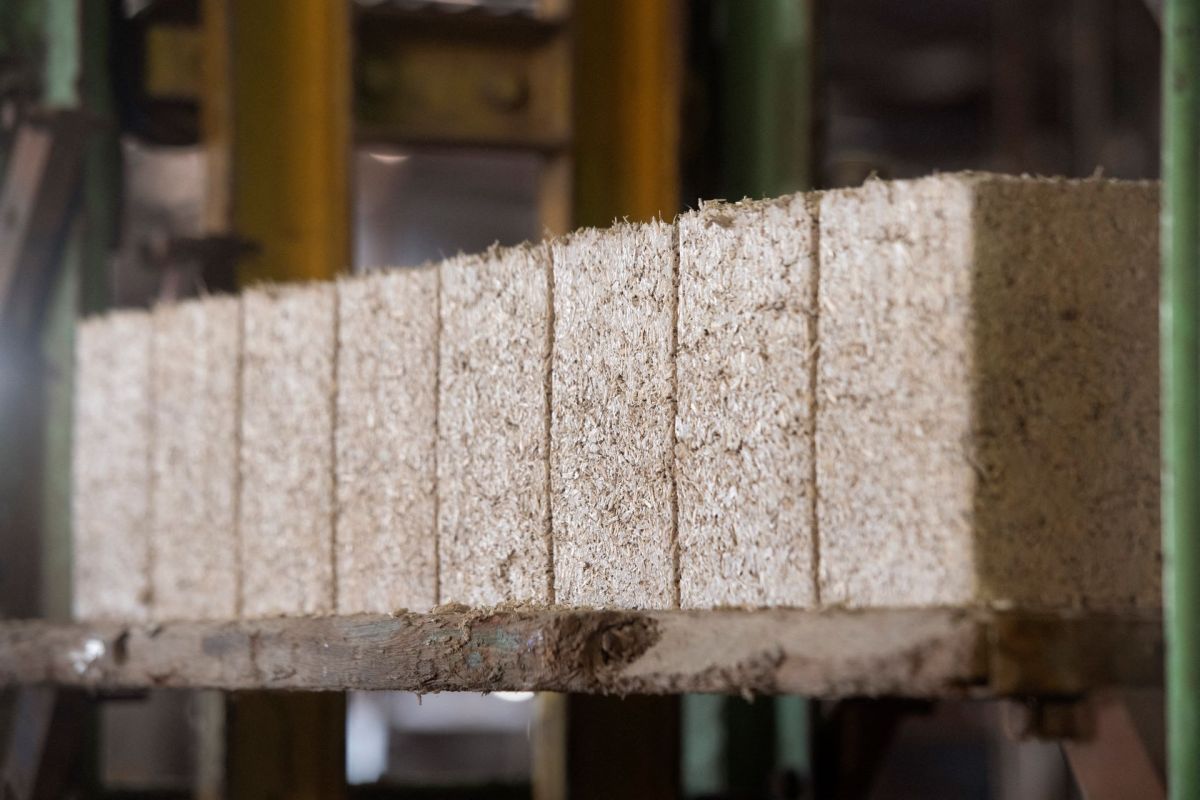In search of more sustainable ways to build our homes, some architects are turning to a surprising resource — hemp, the sister plant to cannabis, which can be transformed into a material called hempcrete.
What is hempcrete?
Hempcrete is a carbon-negative building material made out of hemp, which is increasingly being used in place of concrete.
The biocomposite material is created from hemp shiv — the woody core of hemp stalks — and mixed with a binder, such as lime powder, and water.
The result is a tough, adaptable material that can be mixed with varying proportions of hemp and lime depending on its intended purpose.
Hempcrete is most often suited for building internal walls and insulation, but it might also appear in roofs, attic spaces, and flooring screeds. Recently the material made headlines when a 12-story hotel was built primarily with hempcrete.
Why is hempcrete important?
As the building industry hunts for less carbon-intensive materials, hempcrete is emerging as one exciting alternative with multiple benefits for buildings.
For one thing, hemp makes an extraordinary carbon sink when it is growing — research suggests that the crop can capture twice the amount of carbon dioxide that trees can.
That carbon dioxide is then locked away in the walls of your hempcrete home for as long as it stays standing.
Hemp's strength at sequestering carbon could be crucial for a building industry that is currently responsible for 39% of global energy-related carbon emissions.
Making cement, a key ingredient in concrete, produces vast amounts of air pollution. Manufacturers use fossil fuels to heat limestone and clay in a kiln, releasing an estimated 600 kilograms of CO2 into the atmosphere for every ton of cement made.
Concrete is also made out of nonrenewable sources like sand and gravel. These materials are currently being mined faster than they can be replenished by erosion.
Sand mining in river and marine areas increases the frequency of flooding while also contributing to collapsing riverbeds and coastal erosion. Excessive sand extraction is linked to habitat loss and declining biodiversity.
Switching to hemp, which is renewable, could reduce these environmental impacts while benefiting the buildings too. Hempcrete has high vapor-permeability, meaning that moisture can escape its walls easily and prevent any buildup of dampness and mildew.
The material is slow to cure, though, and not always ideal for load-bearing walls, according to Insider Growth, which still rattled off far more advantages than disadvantages.
How hempcrete helps to reduce carbon emissions
On top of being a carbon-negative crop, hemp continues to help reduce carbon dioxide pollution after it is turned into hempcrete.
Hempcrete is a highly effective insulator for two reasons. First, air pockets between the pieces of hemp shiv, as well as microscopic spaces within the material itself, are ideal for storing heat.
Second, once the lime binder has set, heat can be stored in the material itself, unlike other typical insulation materials that store heat only in the trapped air.
This means that heat is released very slowly from a hempcrete wall, which makes it easier to maintain a constant temperature even in the face of atmospheric fluctuations outside.
Over time, this reduces the amount of energy needed to heat and cool the building, which cuts both energy bills and carbon emissions.
"Hemp is very energy efficient material," Corey Hughes, CEO of Construction Grade HEMP, told ABC7 Los Angeles. "It would usually bring the energy bill down 15% in the home. So you could turn on your heat on Monday and you won't need to turn it on until Thursday. Turn on your AC on Monday and not again until Tuesday night."
Join our free newsletter for weekly updates on the coolest innovations improving our lives and saving our planet.









